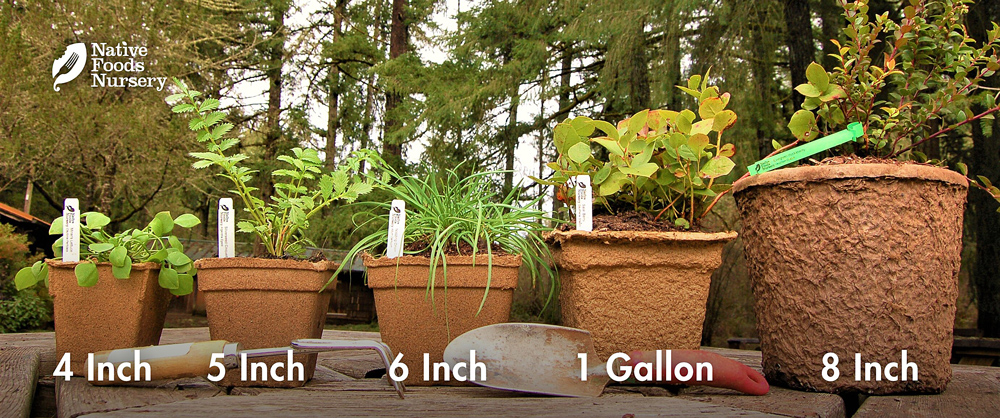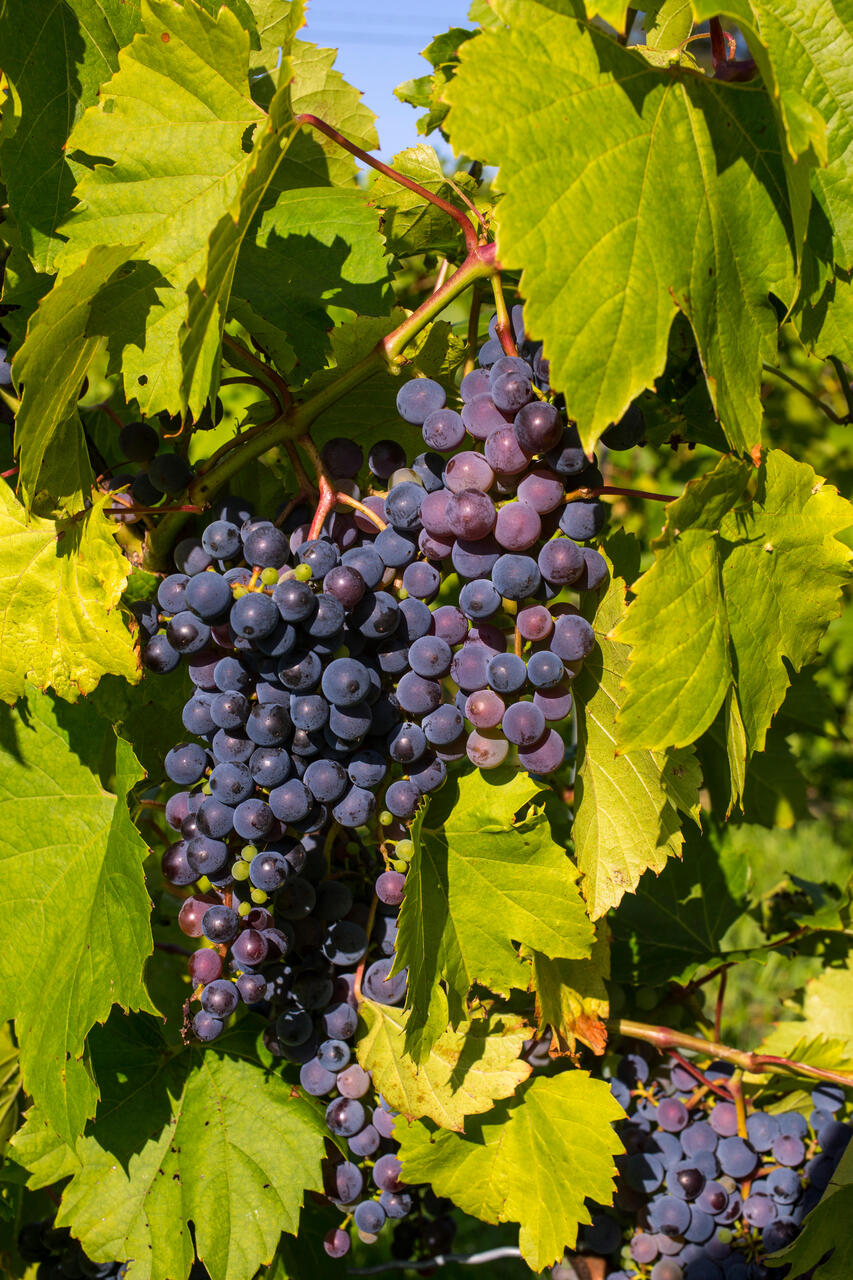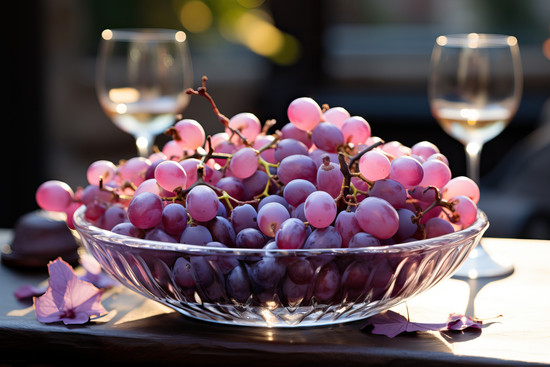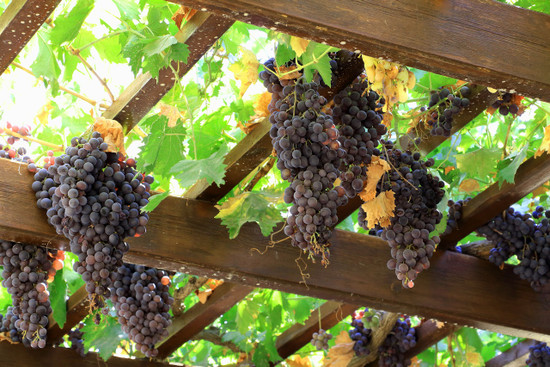Frontenac 'Gris' - Juice-Wine Grape


- Current Stock:
- 0
- Other Names:
- Frontenac
- Latin Name:
- Landot 4511 × Vitis riparia UMN 89
Frontenac gris turns cold climates into wine country. A bud mutation of Frontenac, itself a cross of Landot 4511 × Vitis riparia UMN 89, this variety unites the cold hardiness of native riparia with the rich aroma and versatility of modern breeding [6][7][8]. Reliable even below −35 °F, Frontenac gris thrives in regenerative systems where resilience matters most.
Edible Uses
Bluebell’s rich, aromatic, sweet-tart flavor rivals Concord, with deep purple-blue berries that slip easily from their skins. Excellent fresh eating grape — juicy, fragrant, and slightly floral — and equally superb for juice, jelly, and preserves [2][4][5]. It ripens earlier than Concord, producing consistently even in cool summers [5].
Ornamental Qualities
Graceful foliage and heavy clusters make it ideal for arbors, fences, or vineyard rows in edible landscapes. Bronze-orange fall color adds ornamental charm. Pairs well with other trellised vines like Bluebell or Californica Wild Grape. Or, get creative and plant under a hardy Serviceberry or along an edible hedge as a living trellis!
Environment and Culture
Bluebell descends from native Vitis riparia lines bred by the University of Minnesota (cross of ‘Beta’ × labrusca-type) and released in 1944 [1]. V. riparia contributes the hardiness, disease tolerance, and adaptability that make this vine ideal for regenerative and permaculture systems [3].
Harvest, Care, and Preparation
Bluebell is self-fertile and cold-hardy to −35 °F (Zone 3), with low susceptibility to downy mildew and bunch rots, and moderate resistance to black rot and powdery mildew [2][3][6]. Train to a sturdy trellis; prune annually to renew fruiting canes. Harvest mid-season when berries are fully blue and aromatic — a sure sign of peak sugar content.
Attributes
- Native Heritage: Riparia-based (North American wild grape genetics) [1][3]
- USDA Zones: 3–8 (hardy to −35 °F) [2][6]
- Ease of Care: Easy (vigorous and disease-tolerant)
- Light Requirements: Full sun
- Soil Type: Well-drained loam or sandy loam; adaptable
- Water Requirements: Moderate; steady moisture during fruit swell
- Pollination: Self-fertile (perfect flowers)
- Bearing Age: 2–3 years from planting
- Vine Size: Vigorous climber; strong trellis recommended
- Ripening Window (PNW): Mid-season (earlier than Concord) [5]
- Use: Fresh eating, juice, jelly; sweet-tart flavor, slip-skin berries [2][4][5]
- Disease Resistance: Low to moderate disease pressure (downy mildew, bunch rots) [2][6]
NFN Grape Comparison Table
| Grape | Type & Use | Native Range / Pedigree | Flavor Notes | Cold Hardiness (approx.) | Site & Water | Notes |
|---|---|---|---|---|---|---|
| California Wild Grape Vitis californica |
Wild species; fresh nibbling, jelly/juice; top wildlife vine | CA & s.w. OR riparian canyons/valleys | Classic “wild-grape” tang; better sugars in full sun/heat | ~USDA 7–9 | Full sun; deep, infrequent watering after establishment | Fast, vigorous screen/arbor vine; great for Mediterranean/coastal West. :contentReference[oaicite:1]{index=1} |
| Arizona / Canyon Grape Vitis arizonica |
Wild species; jelly/juice; drought-tough habitat vine | S. NV–UT–AZ–NM–W. TX; N. Mexico canyons/streams | Tart-sweet; bright acidity; improves with heat | ~USDA 6–9 | Full sun; lean, well-drained soils; very drought-adapted | Used in breeding for disease tolerance; excels in arid/interior West. :contentReference[oaicite:2]{index=2} |
| ‘Bluebell’ V. riparia × V. labrusca |
Table/juice (seeded); cold-hardy backyard favorite | UMN release (1944); ‘Beta’ × labrusca-type | Concord-like, sweet-aromatic; slipskin | to about −30 °F (Zone 3–4) | Full sun; average soils; regular summer water for best size | Best riparia-line **table** choice for cold regions. :contentReference[oaicite:3]{index=3} |
| ‘Frontenac gris’ (Frontenac bud mutation; Frontenac = Landot 4511 × V. riparia sel.) |
Wine/juice (processing); high acids, aromatic | UMN release (2003); riparia-based breeding | Stone fruit, citrus/tropical notes in wine | to about −30 °F (Zone 3–4) | Full sun; trellis; consistent water; manage acids with harvest timing | Flagship cold-climate wine grape; not ideal as a table grape. :contentReference[oaicite:4]{index=4} |
References
[1] UC Davis FPS — Grape Variety: Bluebell (release year & pedigree).
[2] Univ. of Minnesota Enology — Bluebell Factsheet (fruit description, use, disease notes).
[3] USDA PLANTS / NatureServe — Vitis riparia native range & breeding significance.
[4] UMN Enology Program — cluster size, flavor, ripening window.
[5] Double A Vineyards — cultivar page (“earlier and hardier than Concord”).
[6] North Dakota State University Extension — cold-hardiness and disease resistance notes.
Pot Sizing Guide

Planting Guide: Bluebell (Vitis riparia × V. labrusca)
Tip: Choose full sun, well-drained soil, and a strong trellis. Bluebell thrives in rugged northern sites where vinifera grapes fail.
Choosing a Site
Light: Full sun (6–8+ hours daily).
Soil: Well-drained loam or sandy loam; moderate fertility; compost enhances moisture retention.
Spacing: 8–10 ft between vines on a two-wire trellis.
Planting Steps
Plant in spring once frost risk has passed. Soak roots 30–60 minutes before planting.
Set crown at prior soil line; backfill; water deeply to settle. Mulch lightly (keep mulch off stem).
Watering & Care
Establishment: Keep evenly moist for first 1–2 years.
After establishment: Moderate water; avoid soggy soils.
Training: Train to trellis; prune annually to renew 1-year fruiting canes.
Feeding: Compost in spring; avoid heavy nitrogen.
Protection
Wildlife: Birds love ripe fruit—use netting as berries color.
Cold: Hardy to −35 °F; mulch roots in exposed sites.
Disease: Excellent resistance to downy mildew and bunch rot; good airflow further reduces risk.
Harvest Basics
Timeline: First fruit 2–3 years after planting.
Season: Mid-season; earlier than Concord.
Use: Fresh eating, juice, jelly; aromatic and sweet-tart flavor.






